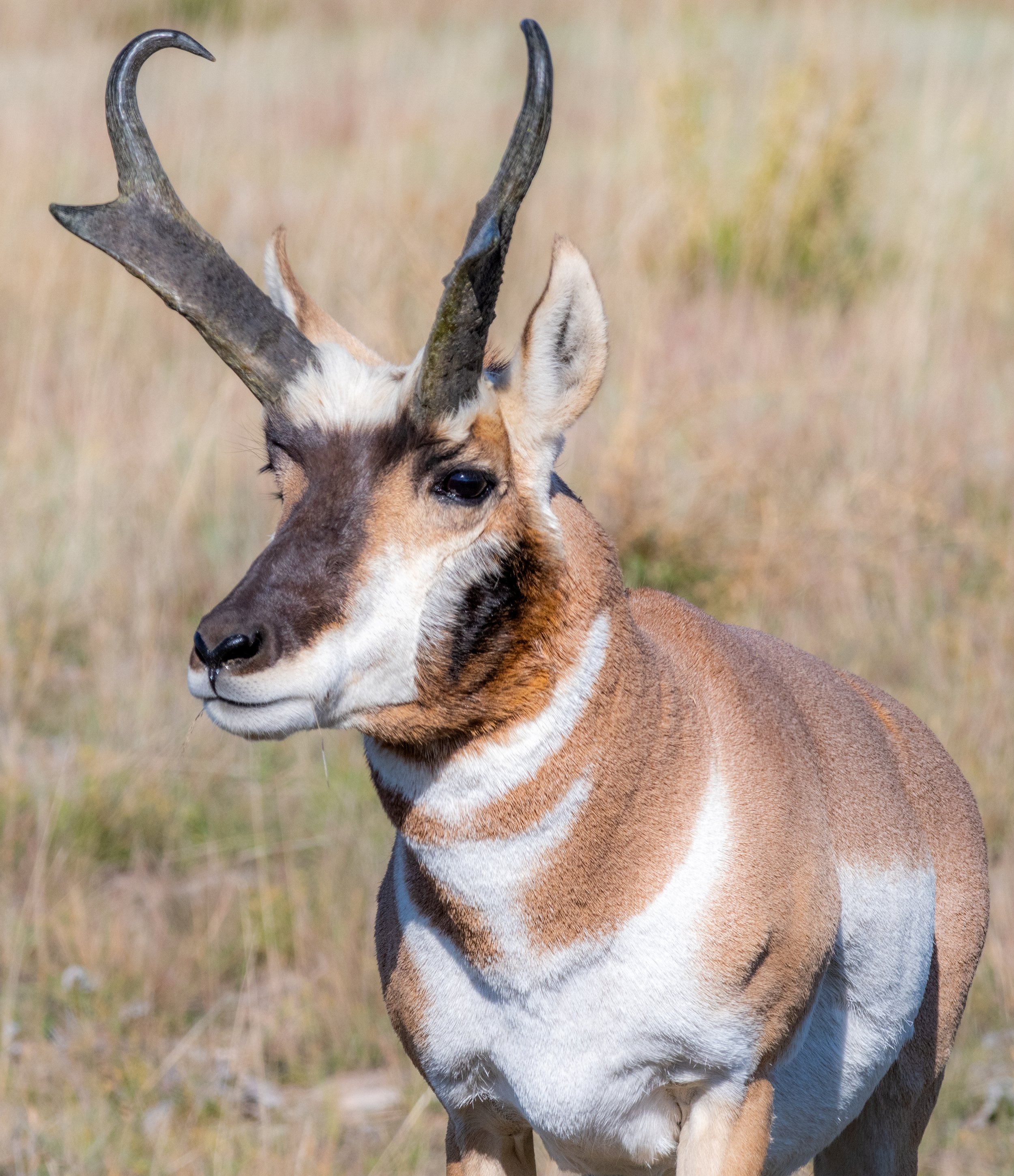I WONDER…. Why do pronghorn run so fast?
One of my favorite animals to encounter when I wander the west is the graceful pronghorn (Antilocapra americana). A uniquely North American creature, the pronghorn is not closely related to the African antelopes that it resembles - despite often being tagged with that title. It’s the sole member of its taxonomic family with its closest living relatives being the giraffe and okapi. Like those animals, pronghorn have horns made up of a bony core with an outer fleshy covering. In the pronghorn’s case, that skin and hair hardens into tough sheath that is shed annually. Males’ horns are large and forked, while the females’ are small, delicate spikes.
Pronghorn: speed demon of the western plains
When quietly munching on grass or nibbling on sagebrush, pronghorn are fairly inconspicuous, their white and chestnut bodies dotting the plains. But if they get a whiff of danger, the pronghorn erupts in a dazzling display of North America’s fleetest feet! Reaching speeds of up to 55mph, a pronghorn can leave any predator choking on its dust as it accelerates into action - maintaining this lightning pace for half a mile, slowing only slightly if further fleeing is required. Potential predators, such as wolves, bears, and coyotes, can manage a measly 35mph burst so have no hope of victory in this race.
Animal adaptations develop in an evolutionary arms race, with each generation favoring those that can live to see another day, whether that’s by catching prey or avoiding being prey. In this context, pronghorn speed begs the question, “Running SO much faster than your pursuer uses tons of energy, so why waste it needlessly?”
The answer is thought to lie in pre-history. Ten thousand years ago, North America looked much different to the pronghorn with a full complement of speedy and scary predators. Cheetahs, lions, jaguars, and packs of long-legged, savage-toothed hyenas patrolled the plains and would have been equipped to catch and kill even the swiftest prey, especially those taken by surprise or slowed down slightly by illness or fatigue. So while the pronghorn’s extraordinary speed seems excessive today, before the extinction of its fearsome foes it was a necessity for survival.
How do pronghorn run so fast?
Pronghorn evolved a host of adaptations to get them moving quickly across the plains. A deep chest encloses a huge heart and massive lungs for their size, coupled with a large windpipe to suck in gulps of air at top speed. A light skeleton and cushioning within their hooves further assists in sending them racing.
Pronghorn find safety in numbers
Like most hoofed animals, pronghorn will band together. Many eyes, ears, and noses tuned for spotting danger have an advantage over animals living on their own. During the fall breeding season, males gather harems of females that they actively defend against rival males. Some of the best opportunities to witness pronghorn activity is when a male is challenged or a female resists being corralled into a harem. Lots of high-speed chasing during these times keeps the dominant male constantly on the move as he protects his breeding rights.
If you’d like to see pronghorn, keep your eyes peeled on roadsides in Wyoming, Montana and Colorado where they are most plentiful. They are easy to overlook, but sharp-eyed observers will spot them. If you’re lucky, you’ll get a glimpse of some high-speed activity - a relic behavior shaped by predators of the past.







